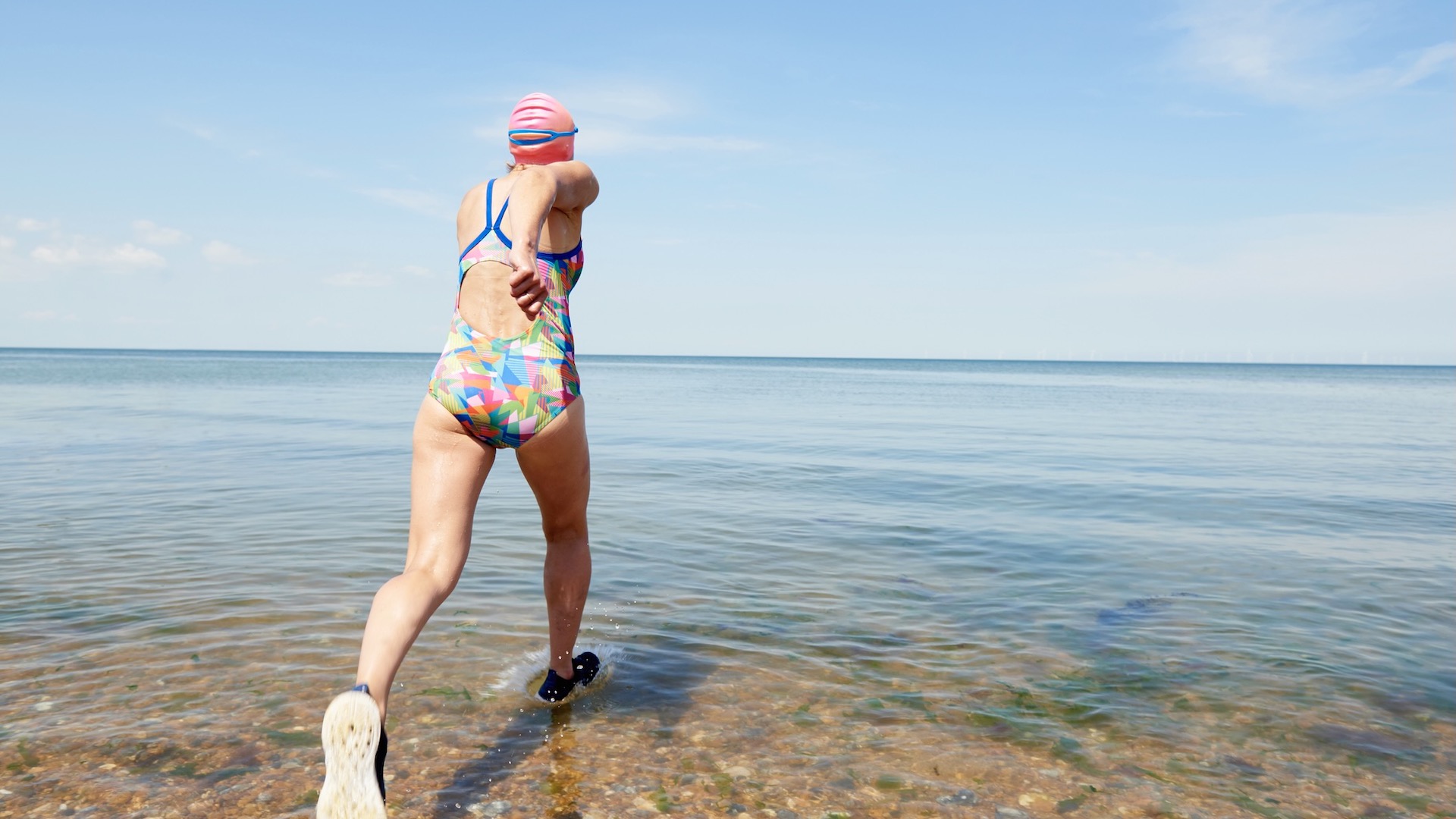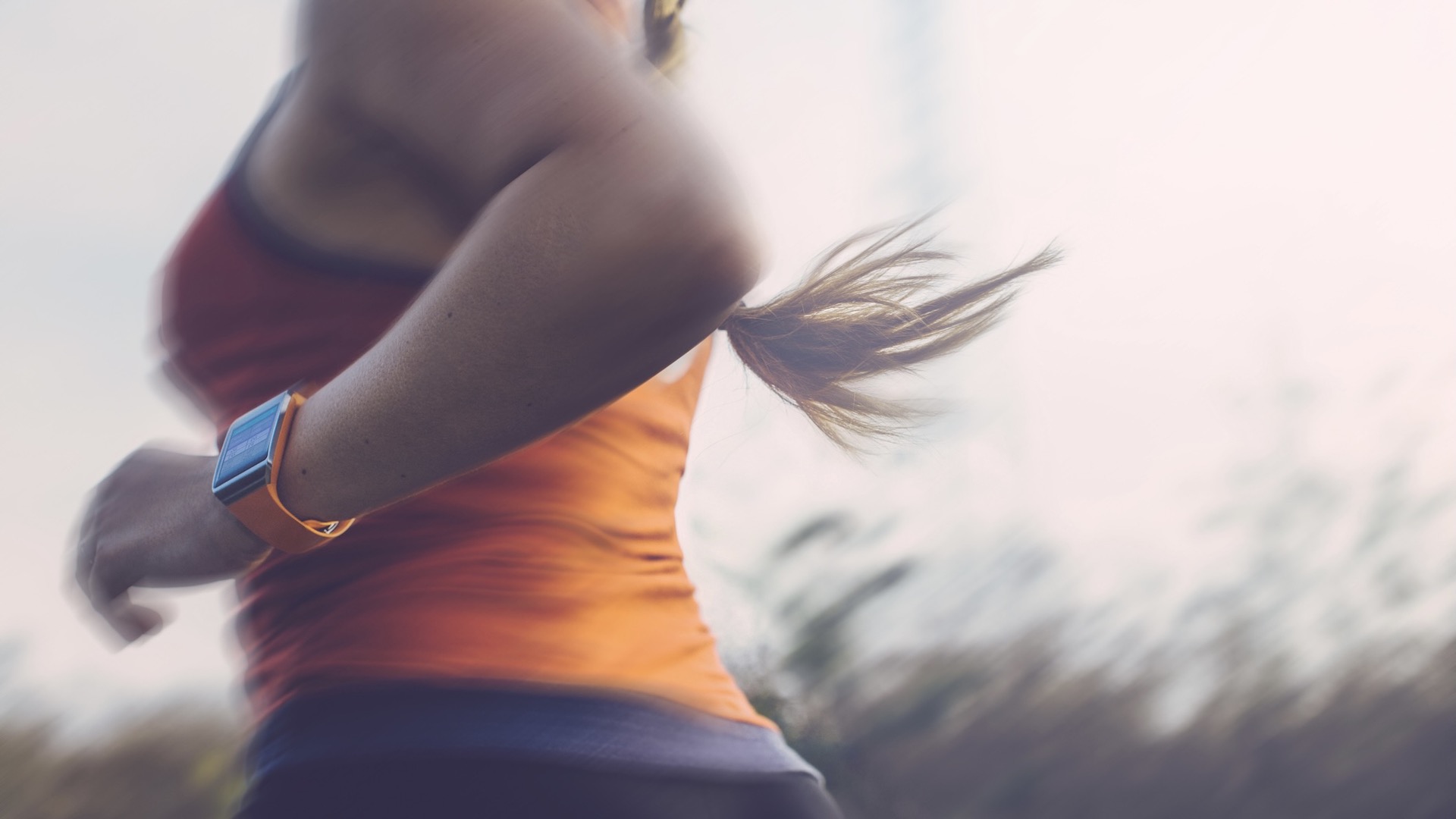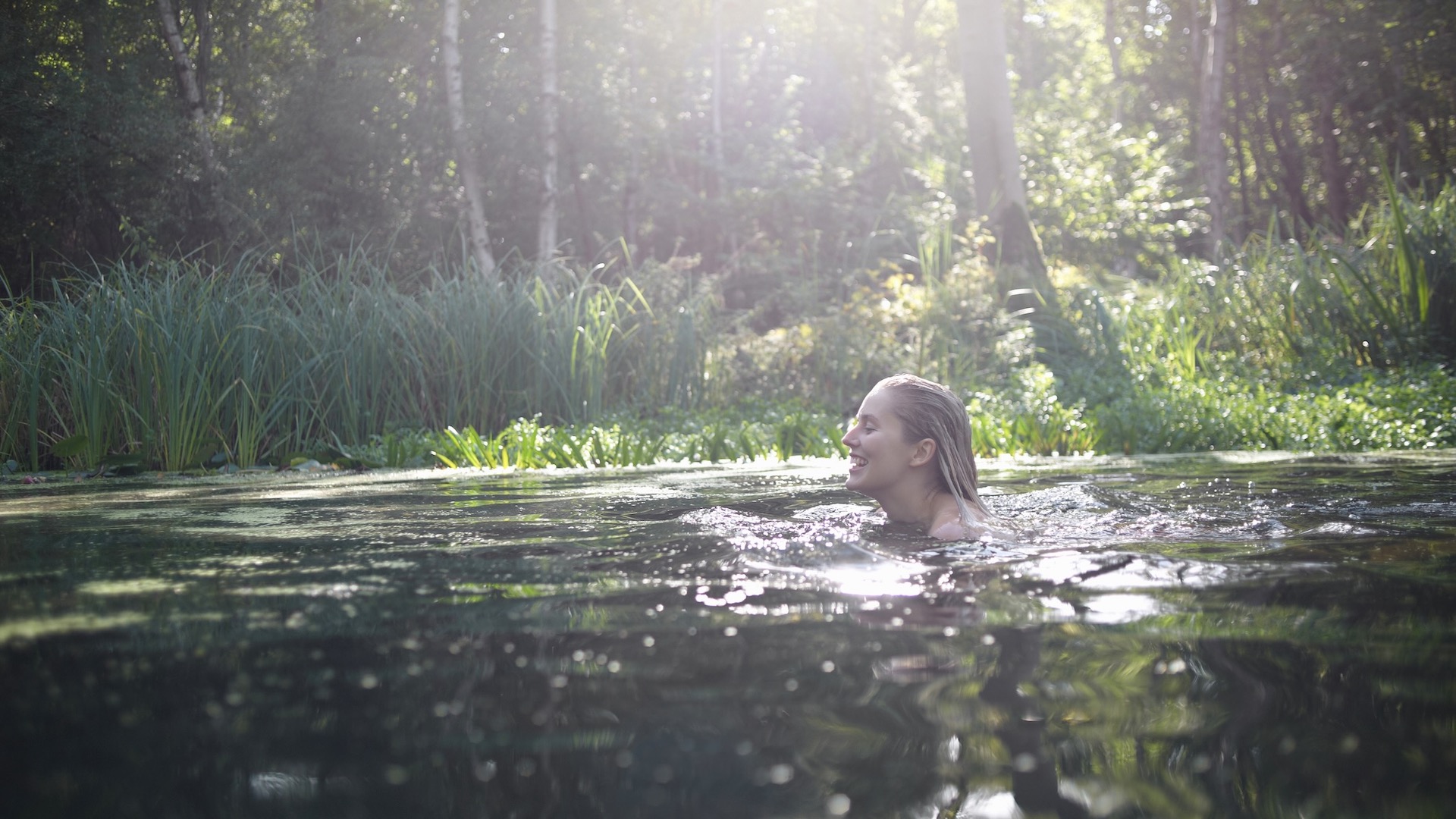Swimming vs running: which is better?
We ask the experts for the pros and cons of swimming and running for fitness

Both swimming and running are excellent forms of cardiovascular exercise, and they each have many benefits. They can also work to complement each other, but let’s take a closer look at the pros and cons of both individually.
We asked James Bickerstaff, a personal trainer at OriGym Centre of Excellence, and Ruth Stone, PT and fitness consultant for www.sweatband.com, to give us a guide to the pros and cons for both running and swimming.
"Both swimming and running provide a significant benefit to the cardiovascular system and help to release endorphins, which are the feel-good hormones that assist in positive moods," Stone says. "However, there are pros and cons for both, depending on your goals, fitness level and previous experience."

The pros of running
Highly accessible
Running is a very accessible activity. “You can run anywhere, any time," Stone says. "Whether it is on pavements, fields, trails, at the gym and even on the spot in your front room, running can be done almost anywhere.
“This is where running has the edge on swimming, because accessing a pool or heading to an open water area is more arduous.”
Improves cardiovascular health
All the latest inspiration, tips and guides to help you plan your next Advnture!
Bickerstaff explains that runners often have lower resting pulse rates and will intake a greater amount of oxygen. As a result, their hearts can cope with pumping more blood per beat, which helps it to perform its job at an optimal level.
“This can help to prevent blood clots in arteries and blood vessels," he says. "Likewise, this process also reduces the risk of developing other cardiac related issues such as complications with blood pressure and cholesterol.”
Great endurance sport
For endurance specifically, a 1993 study conducted by Dr Howard Wainer found that runners of both genders outdistanced their swimming counterparts by up to four times in the same timeframe.
Calorie burner
A 30-minute run will burn between 200 and 250 calories on average. The calorie burn depends on weight and how hard you are working, but it is still a good way to drop some pounds if that is your goal.
Natural activity
Ruth makes the point that in evolutionary terms, humans are 'inherently able to run'. She adds: “Swimming, on the other hand, is the exact opposite, and requires teaching to become proficient at it.”
Good for the bones
Osteoporosis (brittle bones) is an issue for many people as they age, and especially women post menopause. There are plenty of reasons why women should run through the menopause and one key factors is that running is a weight bearing exercise.
“Running increases the production of bone-building hormones within the body, which stimulate the production of bone cells," says Bickerstaff. "As a result, these areas will be more resilient to fractures and strains.”
Makes you stronger
Running places stress on the muscles and, as a result, runners build strength. Although, as Bickerstaff points, out, “If you are keen to build muscles, you will also need to do the right run training and fuel your body correctly.”
Mental health booster
The 'runner’s high' is the feeling during and after a run that is associated with the release of endorphins that occur during exercise. “These hormones can help to combat negative emotions and encourage a positive sense of mindfulness," Bickerstaff says.

The cons of running
Injury prone
Injuries through running are much more common that swimming. “Because running is high impact and, dependant on the surface and support of your shoes, it can be much harsher on our joints," Stone explains. "Particular areas for concern are the calves, knees, quads and hips.”
Imbalance issues
Bickerstaff says that running mainly strengthens the lower body, but many regular runners tend to avoid the upper body, which causing imbalances as a result.
He says: “This negligence of training can cause bodily imbalances, meaning that you’ll become more susceptible to injuries. Likewise, you will lack upper body strength, which could cause issues with other forms of training.”
Fewer calories used
Running burns fewer calories, on average, than swimming in the same timeframe.
The cost
The right running footwear (such as the best trail running shoes for going off-road) is vital to long-term health of joints and many types of running shoes these can be expensive as a one-off cost.

The pros of swimming
Low budget
Stone starts with the question of cost. "There is very little investment needed to get started with swimming,” he says. A swimsuit and goggles are sufficient to start with.
Easy to do
Swimming is accessible for many due to the abundance of swimming pools located in villages, towns and cities across the country. There are a greater number of people who also enjoy swimming outdoors in lakes, lochs, rivers and the sea.
Calorie burner
If weight loss is your goal, you can burn around 250 calories every 30 minutes spent swimming in the pool. It does depend on how hard you are working and your weight but, as Stone explains, “swimming burns more calories, on average, than running".
All round work-out
Swimming is a great workout for stronger muscles. Stone says: ”Swimming strengthens a high volume of the body’s musculature, including the pectorals, deltoids, biceps, triceps, quads, glutes and the core, to name but a few.”
It’s refreshing
When the temperatures rise, swimming is a cooling way to exercise. Many people now swim outdoors and it is a real treat to swim in cool water when the sun is blazing.
Stress reducer
Bickerstaff says: “Swimming is known to be a great way to reduce stress and anxiety. The form of exercise helps to release endorphins in the brain – these are the hormones that make you feel good – and therefore create a general sense of positivity.”

The cons of swimming
Pools charge an entry fee
If you plan to go to a pool or private lido, there will be a charge to enter. “While most swimming centres and lidos are available at a fairly low entry fee, it could be a hobby that’s not readily accessible in the current cost of living crisis," Stone says.
The ‘buoyancy effect’
Stone says that the 'buoyancy effect' of swimming can work against weight loss programmes for swimmers if they weigh more than the average person. She explains: “The buoyancy effect works to aid your swimming in conjunction with – and rising equal to – your body weight. Simply put, the heavier you are, the less your body is expending energy.”
Missed goals
Stone suggests it is easier to slack off while swimming in the pool than when running on a treadmill. "This is a psychological barrier that is a very real deterrent to adherence to a training plan," she says.
Injury problems
While swimming injuries don’t occur too often because it is a low impact sport, they can still happen. Bickerstaff says: “One frequent occurrence is a swimmer’s shoulder, which is due to over-use of the shoulder muscles, especially the rotator cuffs.”
Pool chemicals
While chemicals are necessary to maintain a swimming pool water's sanitary hygiene they can be damaging to swimmers, says Bickerstaff. “Chlorine can cause symptoms such as dry skin, runny noses, damaged hair and sore eyes. Be sure to always wash after exiting the pool and take other precautions such as wearing a cap and moisturising regularly to combat these cons.”
- Cheap running gear: everything you need to start running on a budget

Fiona Russell is a widely published adventure journalist and blogger, better known as Fiona Outdoors. She is based in Scotland and is an all-round outdoors enthusiast with favorite activities including trail running, mountain walking, mountain biking, road cycling, triathlon and skiing (both downhill and backcountry). Aside from her own adventures, Fiona's biggest aim is to inspire others to enjoy getting outside and exploring, especially through her writing. She is also rarely seen without a running skort! Find out more at Fiona Outdoors.
